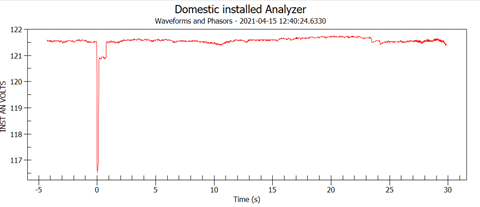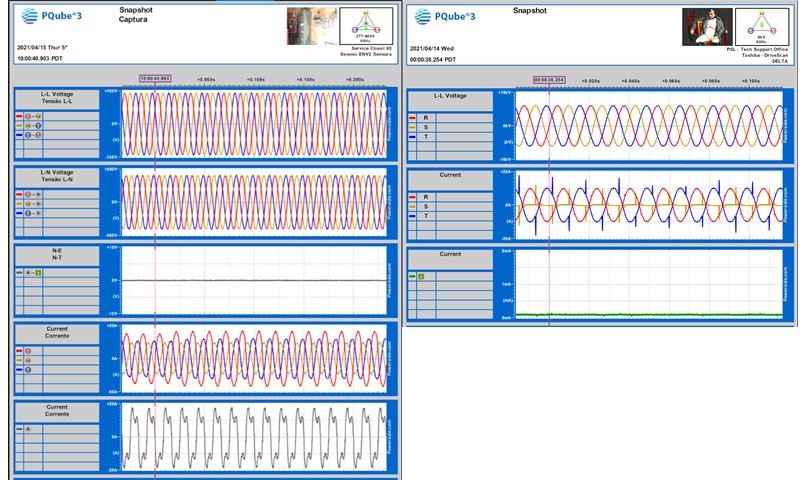
This update is a terrific extension from the earlier 8 seconds (Urms1/2) or 16 seconds (Urms1). With an extended RMS recording, you can, for example, better manage motor inrush currents by monitoring longer times to startup/accelerate, which can indicate motor issues. You’ll also see the magnitude and shape of the waveform for helpful troubleshooting information.
The two types of recordings that the PQube 3 power analyzer now does are:
Long-Term Trending:
Daily trends log values at 1-minute intervals. You get the average but also the min/max of any half cycle value for that 1-minute interval. That is super helpful information and not typical of most other power loggers or power meters. This function ensures nothing gets missed. That daily trend recording is done automatically with the PQube 3 power analyzer. You can use Modbus for live data typically at 1-2 data points per second and record (trending) for longer than a day. Figure 1 shows an example of the 30-second RMS graph.

Event Recording:
Event recording captures granular data. A PQube 3 power analyzer can capture up to 512 samples/cycle (not per second) but this is a super high-speed recording rate and is only for periods of up to a few seconds. It works by the PQube 3 constantly watching the 1-cycle window RMS voltage, and moves that window every half cycle. As soon as the RMS value exceeds the event threshold, it triggers an event recording capturing the complete duration on the event, up to the maximum recording length.
The event waveform recording length (0.16 seconds to 2.56 seconds @50Hz) varies slightly based on the “Recorded samples per cycle” setting in the Configuration Editor. By default, this value is set to 256 which is 0.32 seconds @ 50Hz and supports waveform capture. Figures 2 and 3 below shows examples of the captured waveform.

Settings for Waveform Capture:
- At 512 samples per cycle, you get 8 cycles (0.16 sec @50Hz, 0.13 sec@60Hz)
- At 256 samples per cycle, you get 16 cycles (0.32 sec@50Hz, 0.26 sec @60Hz)
- At 128 samples per cycle, you get 32 cycles (0.64 sec@50Hz, 0.53 sec @60Hz)
- At 64 samples per cycle, you get 64 cycles (1.28 sec@50Hz, 1.06 sec @60Hz)
- At 32 samples per cycle, you get 128 cycles (2.56 sec@50Hz, 2.13 sec @60Hz)
Stay in the know. Sign-up for our newsletter!